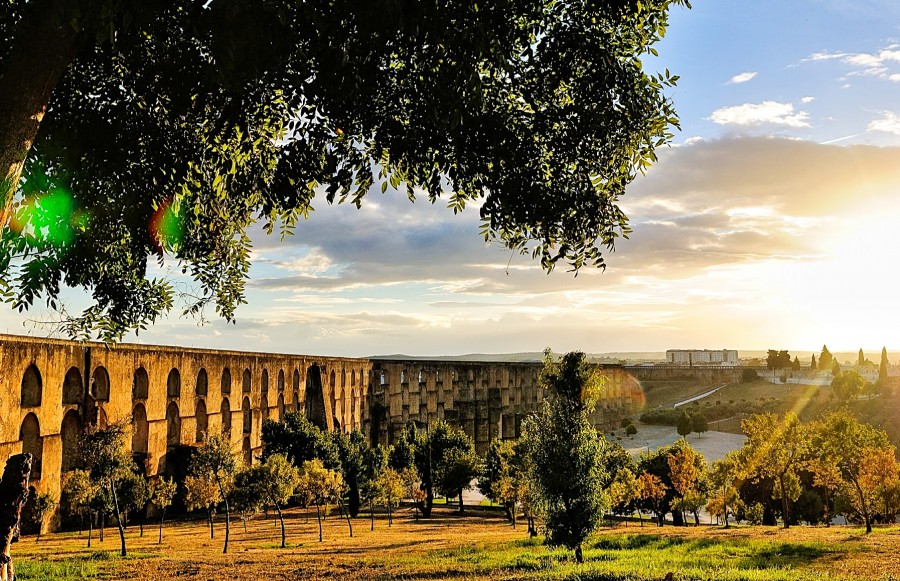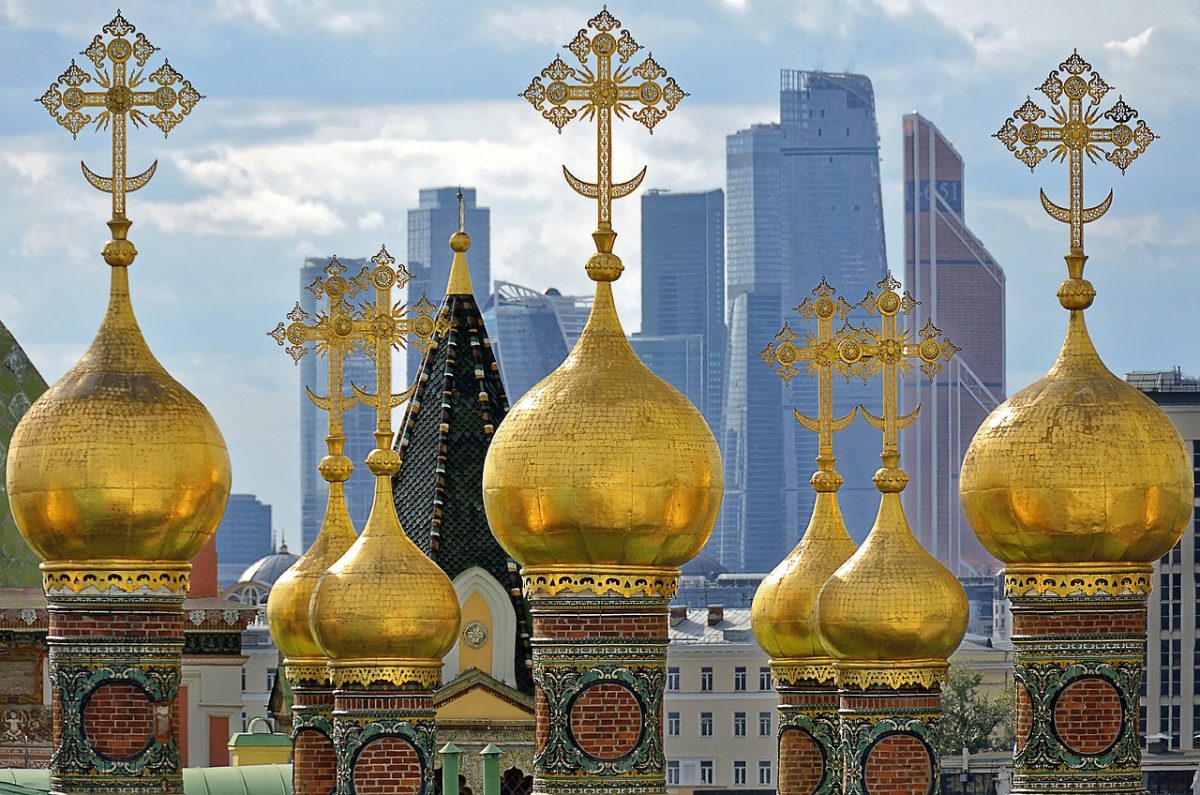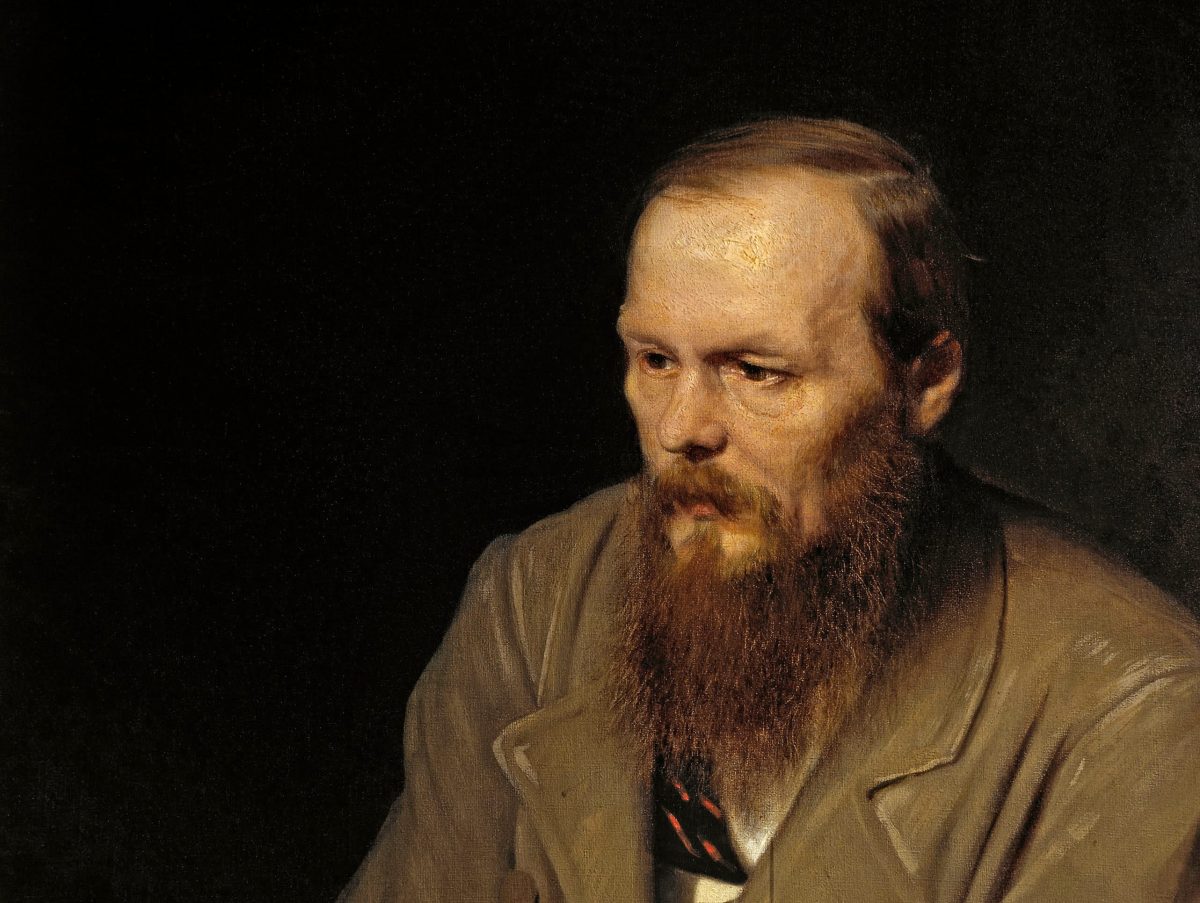Located close to the border, Elvas fought to maintain the independence of Portugal and its history. By doing so, it became an example for all mankind. Upon our arrival in the city, we are greeted by a magnificent Aqueduct extending a distance of 7 km and consisting of 843 arches, constructed by the same man who built the Tower of Belém, in Lisbon, architect Francisco de Arruda. It size and numbers are as impressive as what we will discover ahead of us. We have, in fact, just entered the largest bulwarked fortification in the world, with its defensive structures in the shape of a star that enclose a perimeter of nearly 10 km, which are a unique testimony to the development of military strategy up to the 19th century.
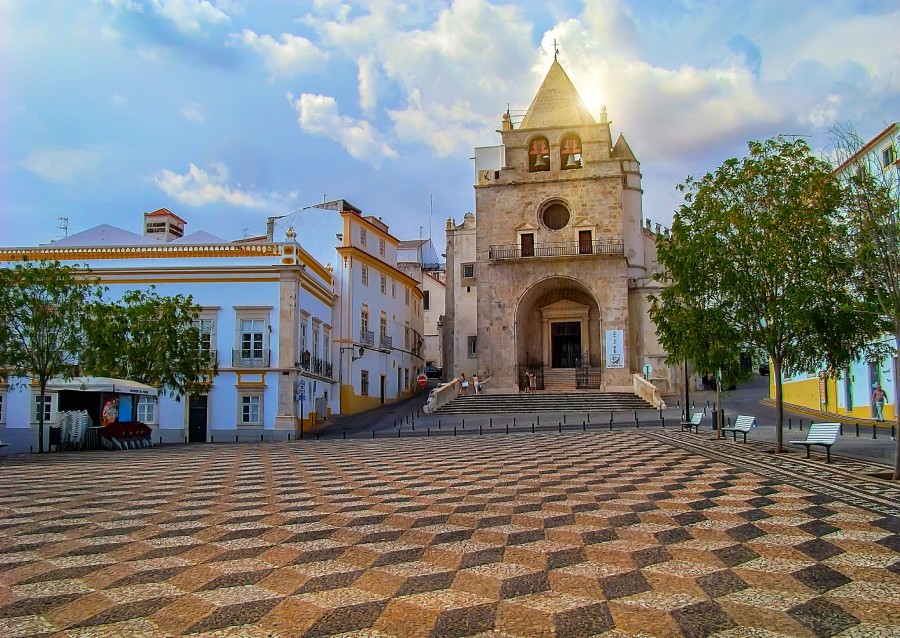
The fortifications were very important in the battles with Spain for the independence of Portugal in the mid-17th century, and served as a base for General Wellington during the Napoleonic Wars in the early 19th century. Today, the fortifications of Elvas are a World Heritage site.
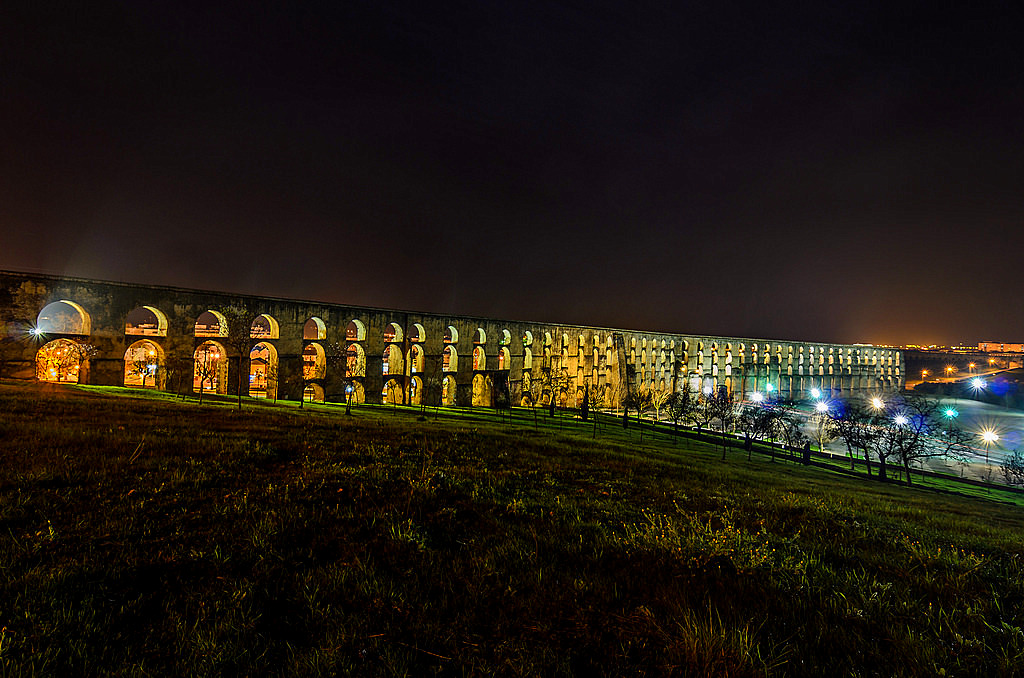
The military section that is preserved today is made up of the Islamic and Medieval walls and the ring of walls from the 17th century influenced by the Dutch style of Cosmander, plus the Forte de Santa Luzia (17th century), the Forte da Graça (18th century) and three small fortifications from the 19th century – São Mamede, São Pedro and São Domingos. If we were birds, we would see the surprising design of these structures on the ground, which we can only comprehend in aerial photographs of or guess at when we visit the monuments and view the surrounding landscape.
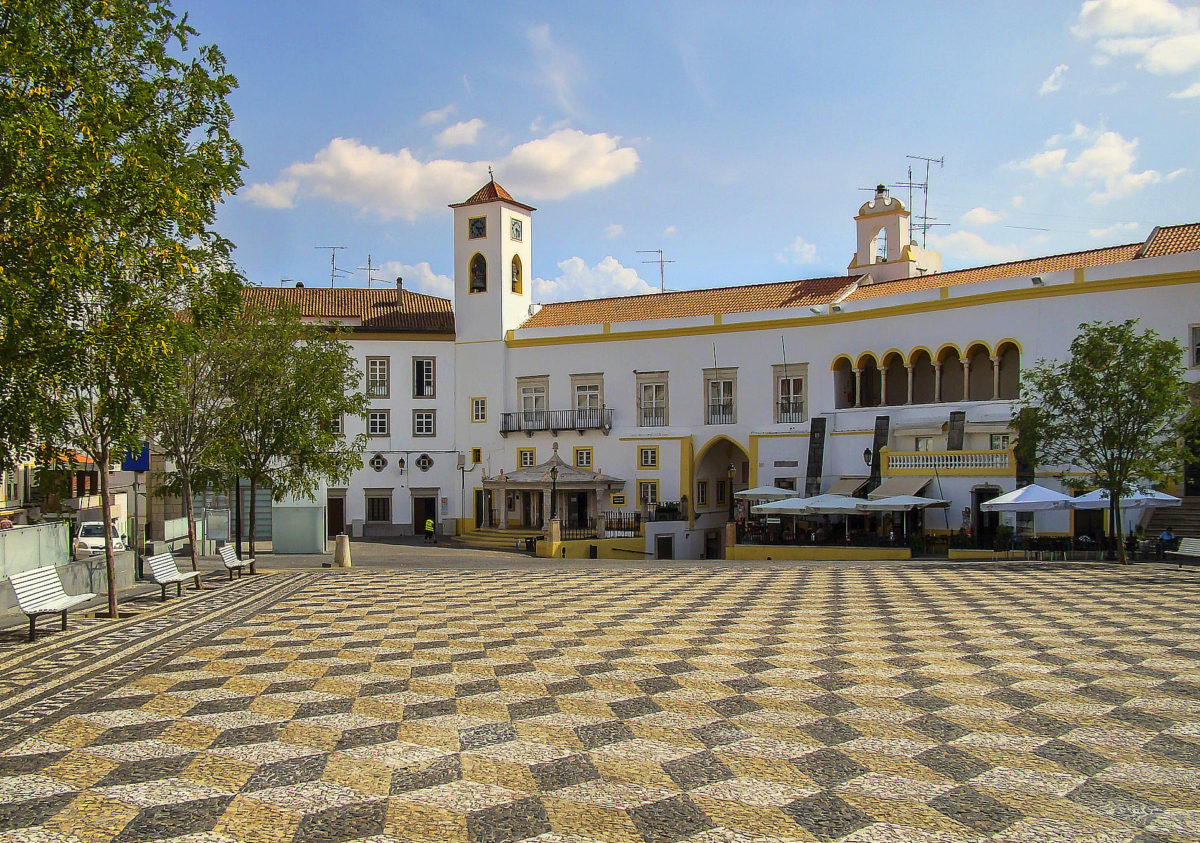
In the heart of Elvas, the area of the Castle is the oldest part of the city. From there to the Praça da República square, where the old Cathedral is located, today the Church of Nossa Senhora da Assunção, we pass by the Domínicas Church, with its original octagonal floor plan, past the Manueline pillory and the Torre Fernandina. Along these streets it is easy to identify the arches that served as the old entries through the walls.
When viewed from the air the town walls of Elvas form a unique star shape, and hiding behind these complex defences is a delightful town that exudes Portuguese charm. There’s plenty to see and do in Elvas, but sightseeing can only be done at a leisurely pace, as like much of central Portugal the town basks under intense sun and heat. Nevertheless, it’s highly recommended that Elvas is included in any tour of the Alentejo region. Discover what to see and do and the best places to visit in Elvas, Portugal!
1. Graça Fort
Forte da Graça (Graça Fort), also known as Forte Conde de Lippe, is located on the mountain with the same name, one of the highest ones and very important in the defensive strategy of the region. Only one kilometre to the north of the city of Elvas. The Fortress stands out as a notable example of 18th century military architecture and is considered by many historians as one of the most powerful bastioned fortifications of the world. This building is one of the best examples of bastioned fortresses in cross-border zones and it’s classified as World Heritage Site by UNESCO. King D. José I commanded its construction and the works started in 1763.
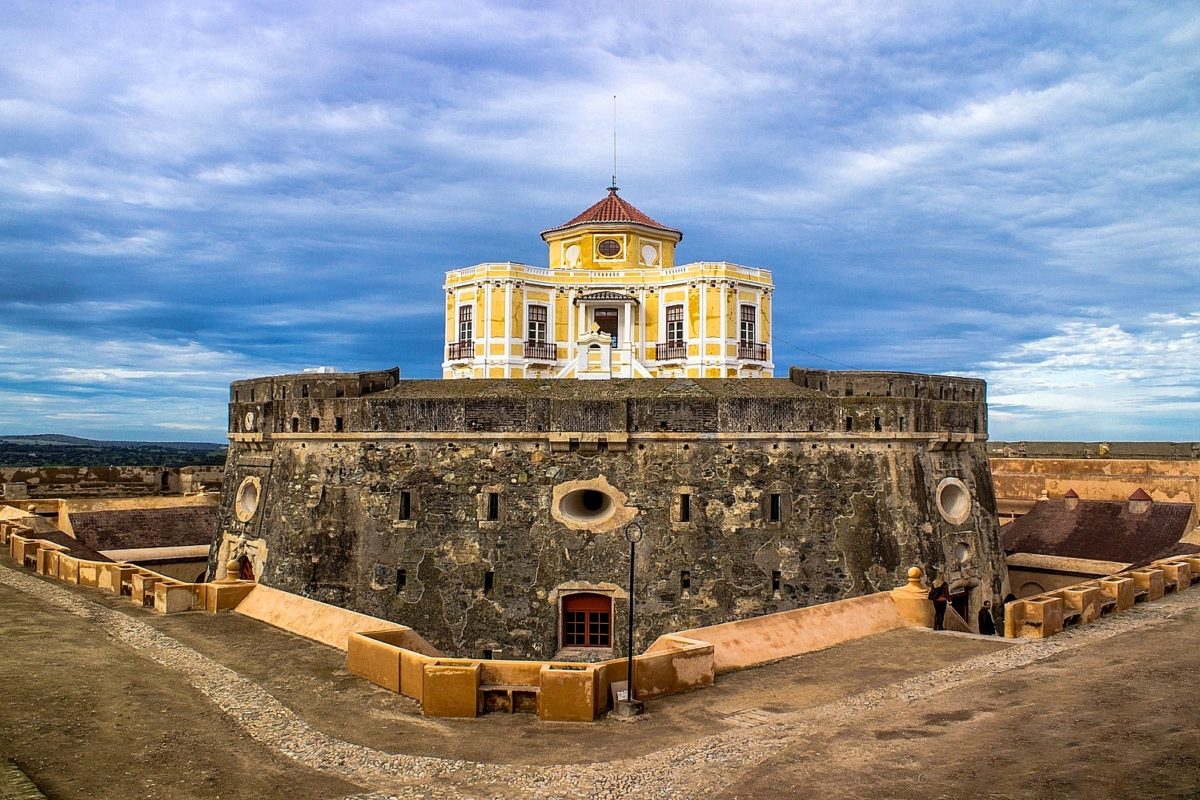
More than six thousand men and four thousand animals worked, exhausting almost every resource of the city. Finally, it was opened in 1792, during the reign of D. Maria I. The construction was erected in a zone that constantly suffered enemy attacks, specially from the Spanish forces. This fortress resisted many Spanish attacks during the Guerra de las Naranjas (Oranges War) in 1801 and the bombing of the French troops along the Peninsular War in 1811. The fortress features three defensive lines and includes some dependencies inside, like the governor’s house, a chapel or a big tank, among others.
2. Santa Luzia Fort
Forte de Santa Luzia (Santa Luzia Fortress) is a small stronghold with walls in zig-zag located in the city of Elvas, in Alentejo, Portugal. Currently, since 2001, this fortress houses the Army Museum where is exhibited an interesting collection of weapons from the Middle Ages until the 19th century, as well as uniforms and miniatures.
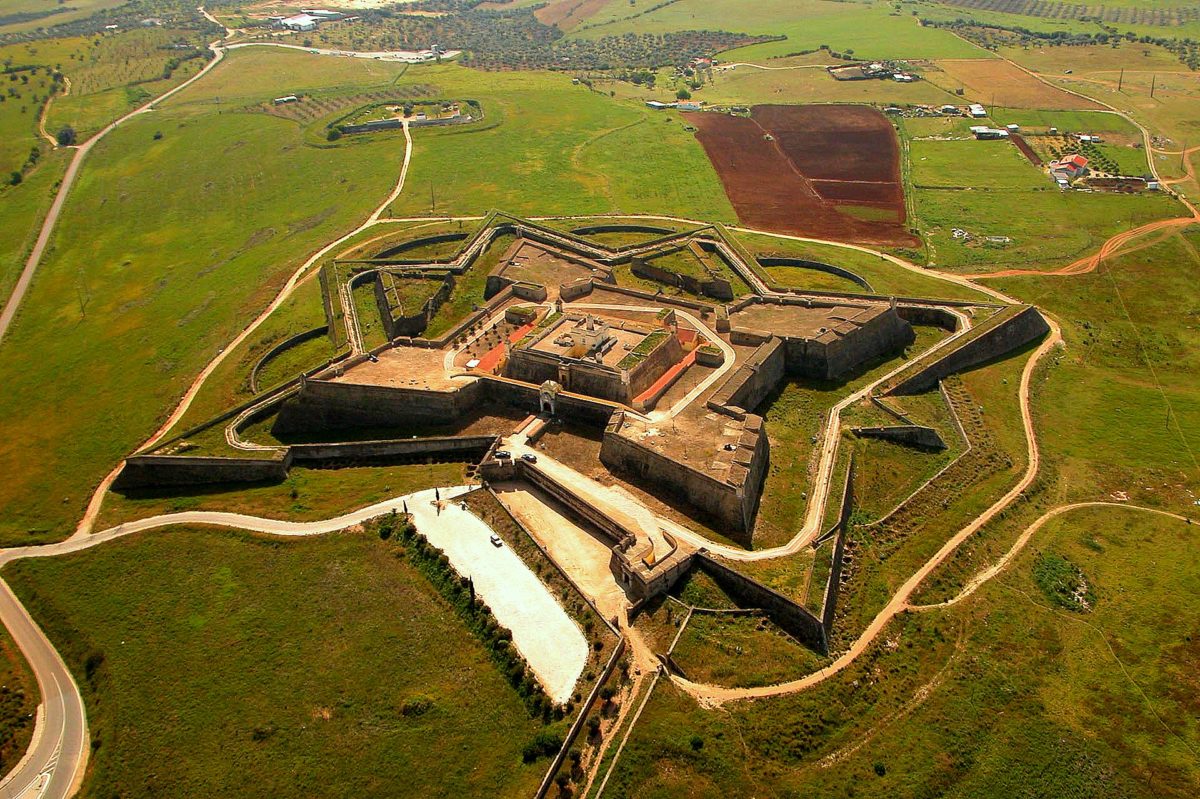
The museum also features three rooms focused on the Batalha das Linhas de Elvas battle, and other border conflicts, such as the Guerras das Naranjas (War of the Oranges) supported by interactive content.
3. Elvas walls
The complex of fortifications of Elvas was founded during the reign of King Sancho II and it is the biggest complex of bastioned land fortifications in the world. It has a perimeter that sizes between 8-10 kilometres in an area of 300 hectares. Its bastioned walls were built up during the Restoration War and they are a clear example of the Dutch tradition of military architecture. This complex features medieval and modern fortifications. The medieval walls join each other with turrets, transforming the city into a huge headquarter following the former Dutch fortification method.
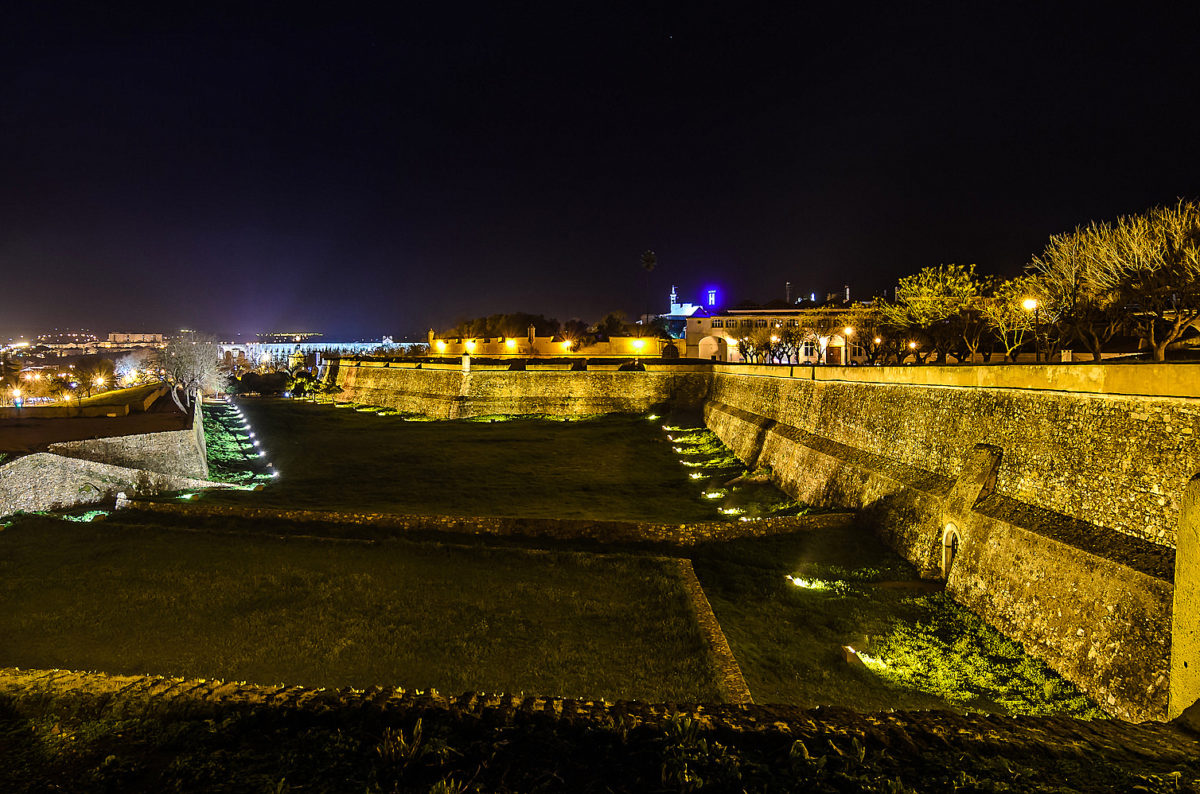
The complex also has seven bastions, four middle bastions and a redan that were part of the first defensive line of el Alentejo, together with the Campo Maior one, Ouguela one, Olivença one and Juromenha one. The access is through any of the three double doors (the Olivença one, the São Vicente one or the Esquina one), all of them with war decorations. If you decide to walk by the bastioned wall of the city of Elvas, you’ll be transported to the Restoration War period (1641-1668), when Portugal sank in a new war as soon as it had reached independence.
4. Amoreira aqueduct
The Aqueduto da Amoreira (Aqueduct of Amoreira) reaches around 8 kilometres, from the outskirts of Elvas city, and carries water to the marble fountain of Largo da Misericórdia (Fonte da Misericórdia fountain).
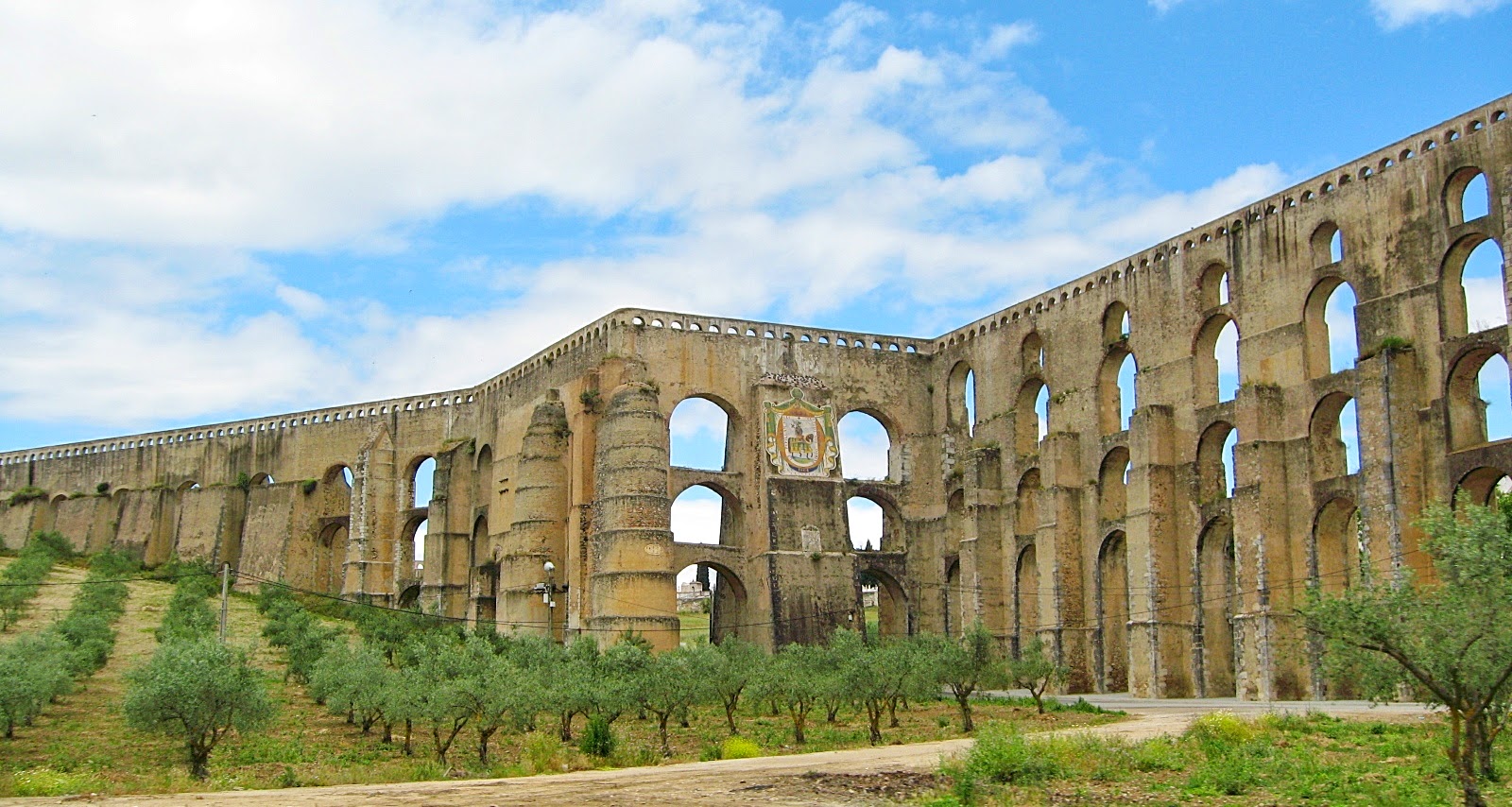
This amazing aqueduct, classified as World Heritage Site since 1910, took more than 120 years to build and was finished in 1622 following the sketches of Francisco de Arruda, with huge cylindrical buttresses and sequences of arches that reach 30 metre in height at points. One of the best places to enjoy this view is from the road to Lisbon, to the west of the city centre.
5. Church of Nossa Senhora da Assunção
The Igreja de Nossa Senhora da Asssunção Church is a sturdy fortified church built between 1517 and 1537 following the plans of Francisco de Arruda, the same architect who designed the Amoreira Aqueduct. The church served as Cathedral until it lost its episcopal recognition in 1882. Despite having been restored in the 17th and 18th centuries, it still preserves some Manueline details in the side doors. The building exhibits a look of semi-fortress due to its buttresses and battlements, and – above all- the solid bell tower, annex to the front façade and with a deep portico where the main door opens.
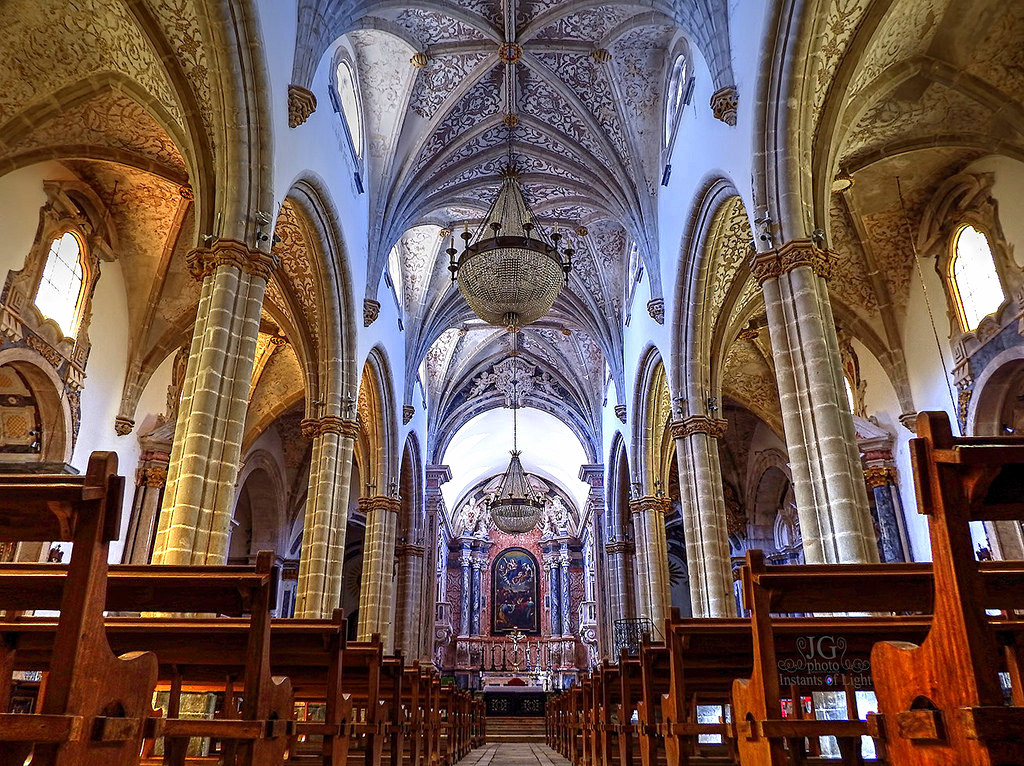
The interior houses a sumptuous organ from the 18th century, beautiful tile panels from the 17th century, and several tombstones. The major chapel was built in 1734 by José Francisco Abreu in polychromic marble with a Baroque style and paintings representing Nossa Senhora da Asssunção by artists Lorenzo Gramiccia. The side chapels also date back to the 18th century, two in gilded sculpture, and the other in marble. From the cathedral itself, you access the Religious Art museum, located in the annex Casa do Cabildo da Sé. It is a 17th century building worth noting for its Sala Capitular, used as meeting room by the authorities of the Cathedral. Several religious objects from the Cathedral are part of its collection, as well as paintings by Luís de Morales, among others.
6. Castle of Elvas
Elvas Castle is an Islamic fortress rebuilt in the 13th and 14th centuries that only attained its current aspect in the 16th century. There lived the Mayor of Elvas. The castle was also setting for major historic events such as peace treaties and princess exchanges. The keep is more recent that the rest of the building, dating from the 15th century in a northeastern angle and covered in roof tiles. Originally, the castle was part of a defense network from the 18th century, but soon lost its relevance due to its vulnerability to artillery attacks.
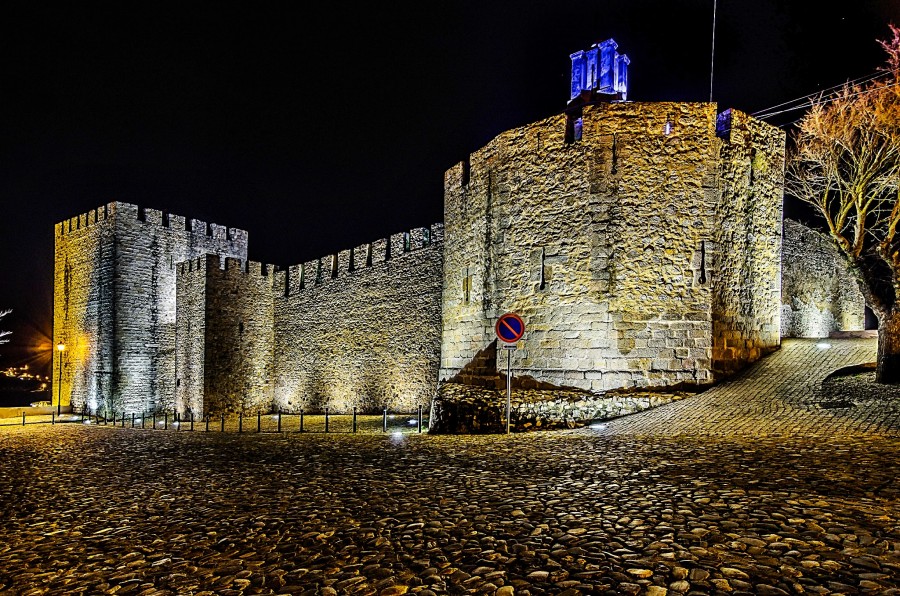
The castle lost any military function in the 19th century and was abandoned. In the 20th century, some locals who loved history promoted its restoration and left the caste with the aspect it would have had in 1906, which would become the first National Monument in Portugal. From the top of its battlements you can get an amazing view at the city, surrounded by fortresses, and the nearby landscape with olive plantations.
7. Square of Santa Clara
Largo Santa Clara is a picturesque triangular square in the city of Elvas, surrounded by blazoned noble homes with iron grills. The square is just in front of the Igreja de Nossa Senhora da Consolação Church.
The square is located next to an Arab gate from the 10th century flanked by two towers and crowned by a gallery. In the heart of the square stands the “pelourinho” pillory from the 16th century, a tall turning column made of marble, still preserving the four iron arms with dragon heads from which miscreants were hung.
8. São João de Deus Convent
The São João de Deus Convent was built in the city of Elvas in 1645, to be a Military Hospital, following king D. João IV’s command of building military hospitals in all important military spots in the country. This was the first built under said orders. Despite having been extended in 1653, it always was too small for the amount of patients treated.
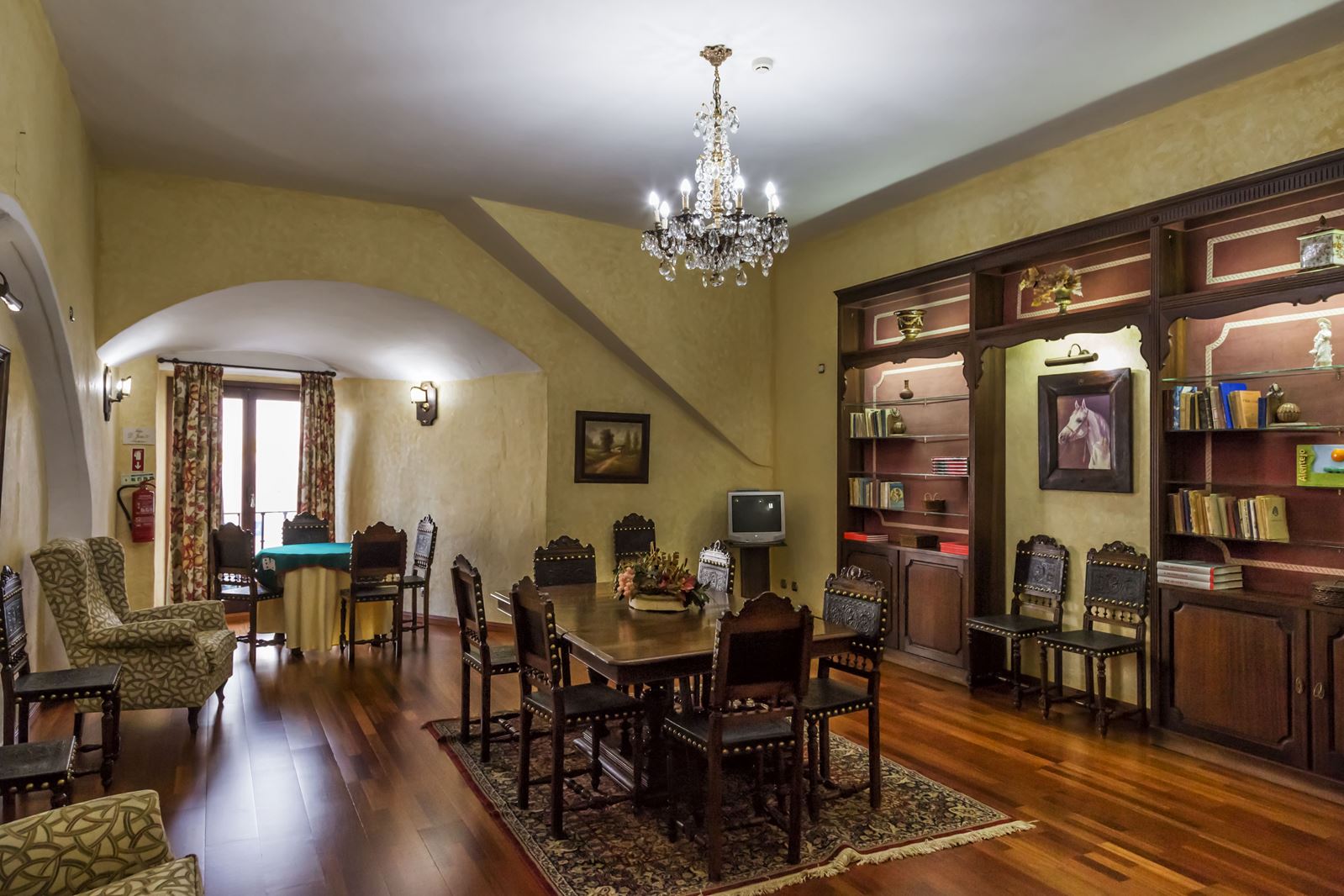
In 1659, the year of the Batalha das Linhas de Elvas battle, it featured only then monks who nursed as many as many as 350 patients. The military hospital was working until 1976, when it was abandoned. It would be restored in 2004, to become São João de Deus Hotel. The church of the convent was built next to one of the towers of the Fernandine walls. The rest of the temple is simple and is closed.
9. Sanctuary of Senhor Jesus da Piedade
The Sanctuary of the Lord Jesus da Piedade is located in the Piedade Park, in the parish of the Assumption, city and county of Elvas, in the district of Portalegre, Portugal. The original church of the Lord Jesus da Piedade was built in 1737 on the site of an old wooden landmark that marked the death of a farmer from the Tower of the Arches, erected on the initiative of Father Manuel Antunes. Measurements on the ground were made by the official county gauge, António Gomes Mena, on November 20, 1752. The license for the deed was granted on December 19, 1752 and the work, designed by elvense João Fernandes, begins August 11, 1753, the date of the blessing of the first stone. The church was completed on October 13, 1754, although it underwent several extensions until 1779.
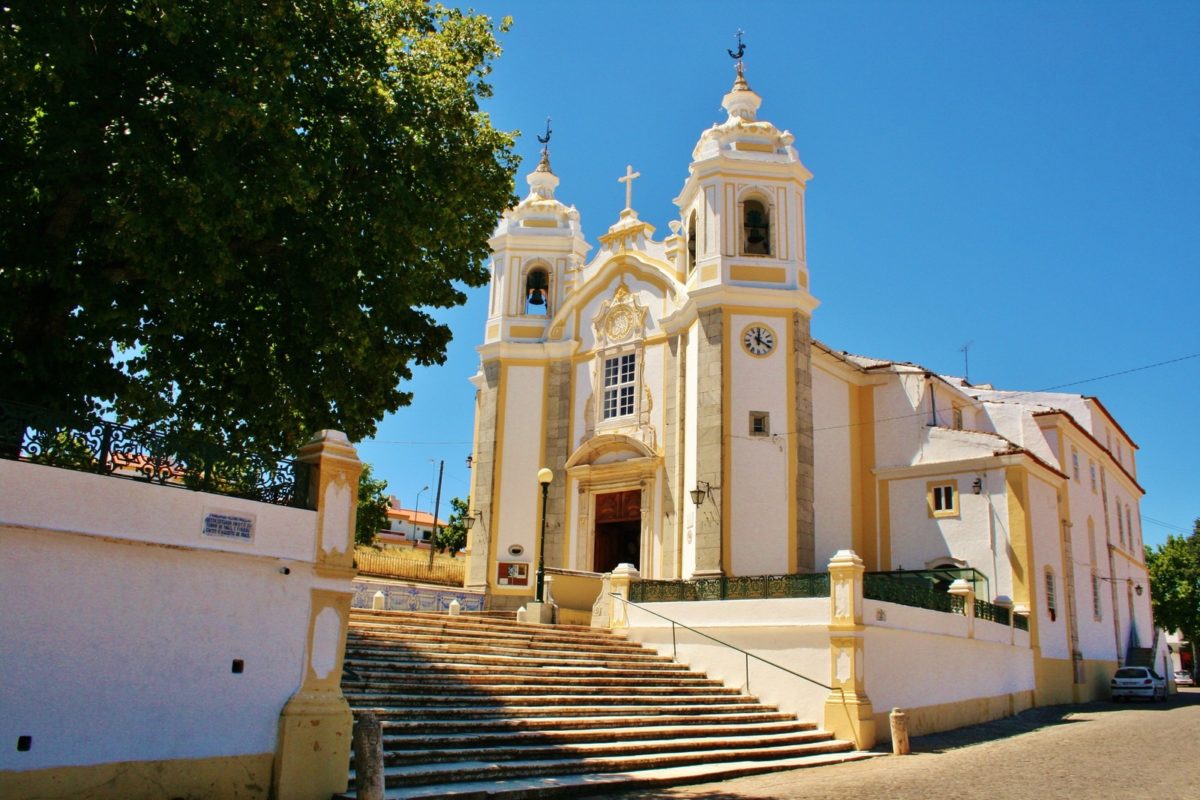
The Sanctuary of the Lord Jesus of Mercy was classified as Property of Public Interest on July 25, 2014. The church of the Lord Jesus of Mercy is an excellent example of the baroque period in the reign of King John V; the exterior of the church, marked by two towers with bulbous domes, has a pediment of masonry with the inscription “Jesus of Mercy”. The churchyard, designed to welcome the pilgrims, presents on its walls a tile covering from the 18th century. The interior of the church is composed of a single division. The main chapel, as well as the two lateral altars, are marble from the 18th century. These side altars have painted canvases representing Our Lady of Grace and the Repentance of St. Peter, by Cyrillo Volkmar Machado.
10. São Domingos Convent
The São Domingos Convent was established in 1267 and built during the last third of the 13th century in the same place where once stood the Ermita de Nossa Senhora dos Mártires Hermit, in Elvas, Alentejo. This building underwent several modifications in the 15th century and later. Its façade was rebuilt in Baroque style in the 17th century, and the side chapels were made of marble.
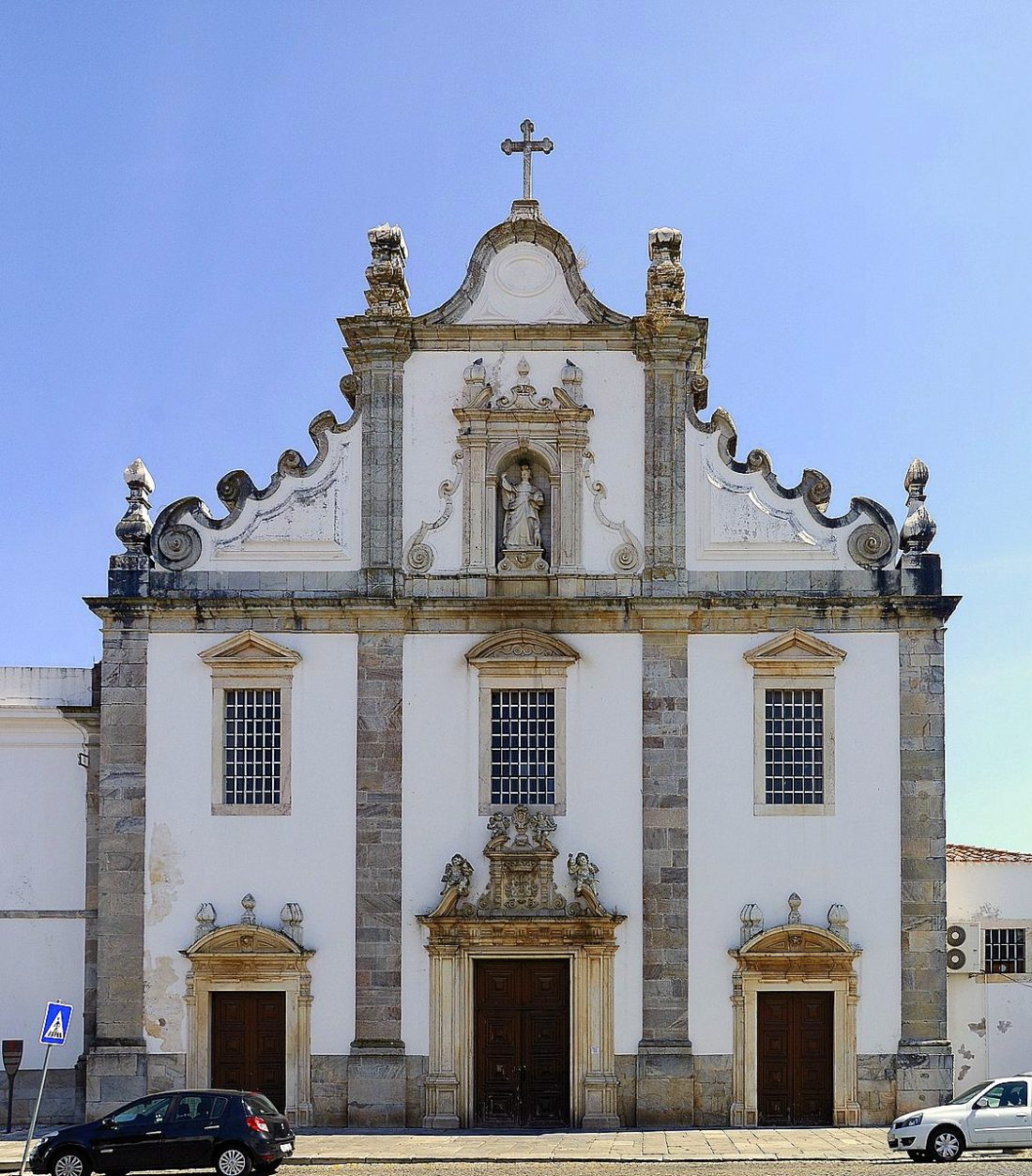
During the Restoration wars, the walls that had been projected to be built clased with part of the convent, having the hospice to be demolished. Already in 1834, after the extinction of monastic orders, the convent was turned into a military station. The current building features a baroque portico crowned by the coat of arms of the Dominicans. In the interior, the tile panels in the walls stand out, since they retell the story of São Domingos. Also note the Sala do Capítulo, of great Baroque lavishness.
11. Elvas Cultural Centre
Casa da Cultura de Elvas (Elvas Cultural Centre) is located in Praça da República square, in a building dating back to 1538 and erected in the heart of the city by architect Francisco de Arruda. This building was built besides the second Islamic wall and modified halfway through the 18th century. It is also worth noting the beautiful 16th century gallery overlooking Praça da República square and a manueline window that opens to Rua da Cadeia street.
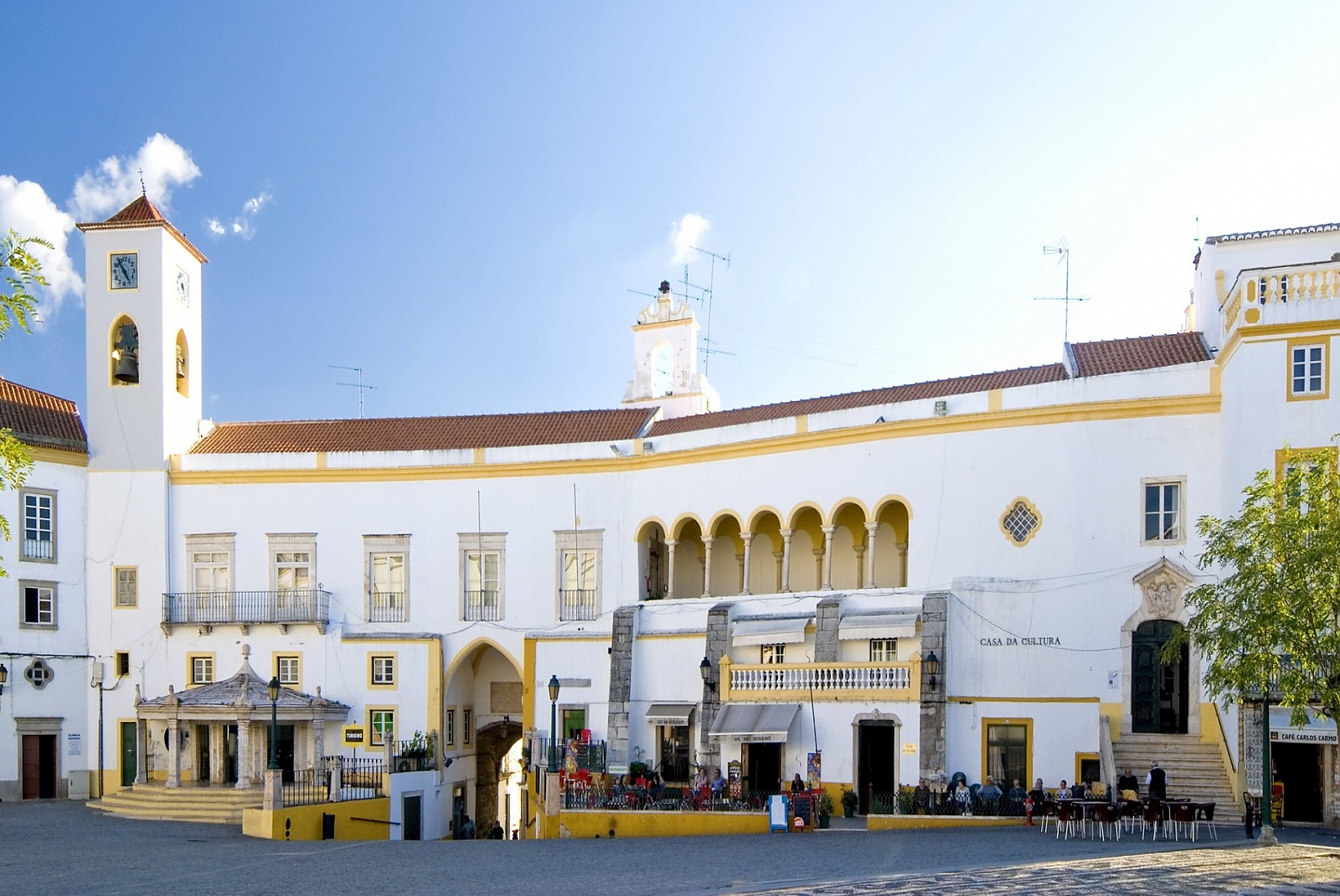
The main door shows the emblem of the city with a Knight and the Standard, from the last third of 18th century. It’s worth to visit the noble room with Curillo Volkmar Machado’s pictures and the Archive room decorated with 18th century furniture, both of them inside the Centre. Besides, it houses several temporary exhibitions and other cultural events year round.
12. Elvas Contemporary Art Museum
The contemporary museum is installed in a historic 18th century building designed by architect José Francisco de Abreu and owned by the municipality of Elvas. The permanent exhibition is made of works from the António Cachola Collection. This collection is unique in that it consists solely of Portuguese artists. The exhibition is structured chronologically from the 1980’s to present day, exploring all themes, forms and styles of contemporary artistic expression.
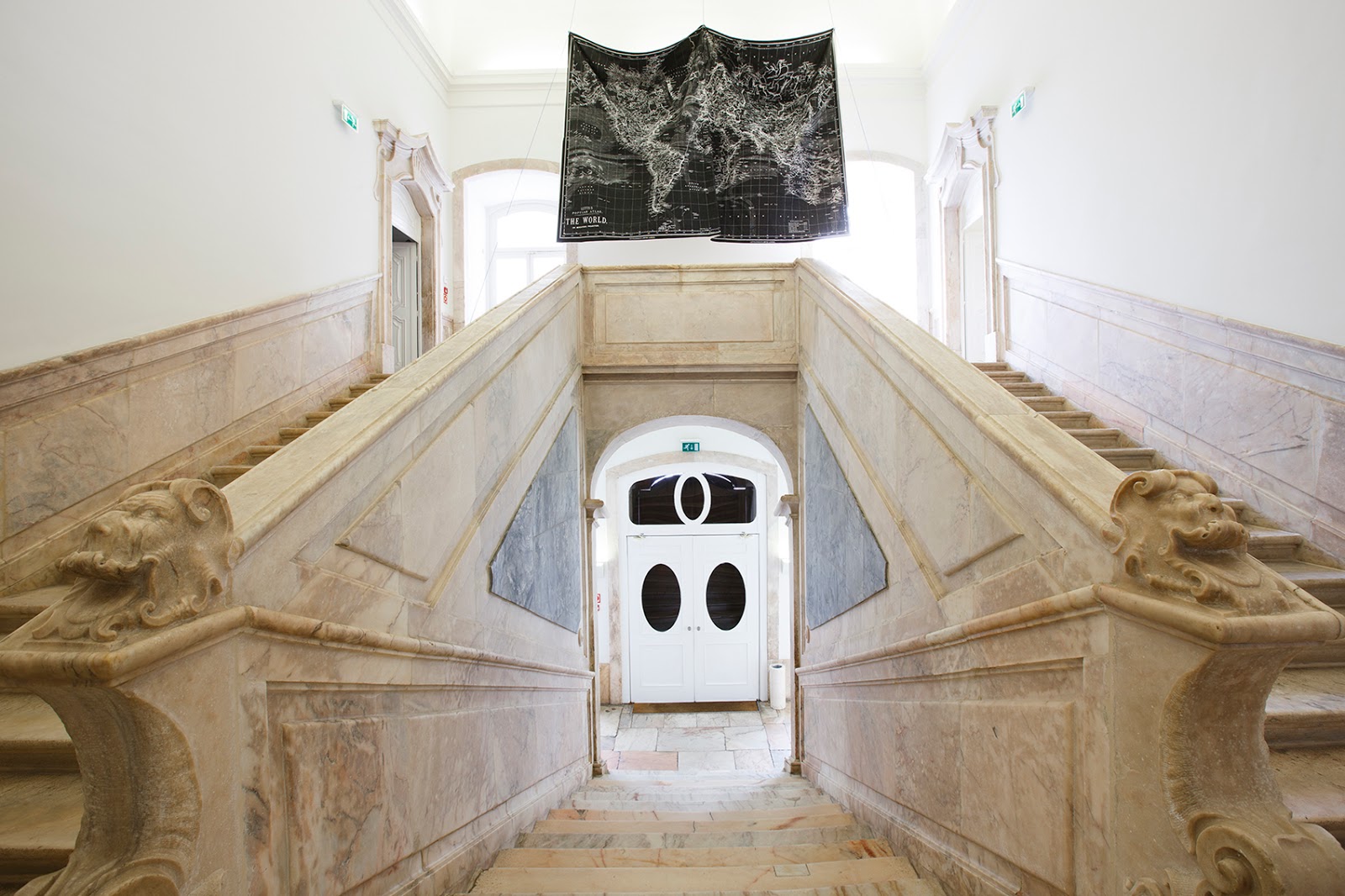
Two notable works in the collection are from Joana Vasconcelos. “Valium Bed” (1998), above and at top, is made of painted MDF and decorated with actual valium pills in secure blister packaging. “The Bride” (2001-2005), below, is a 600cm tall chandelier of stainless steel and tampons.
